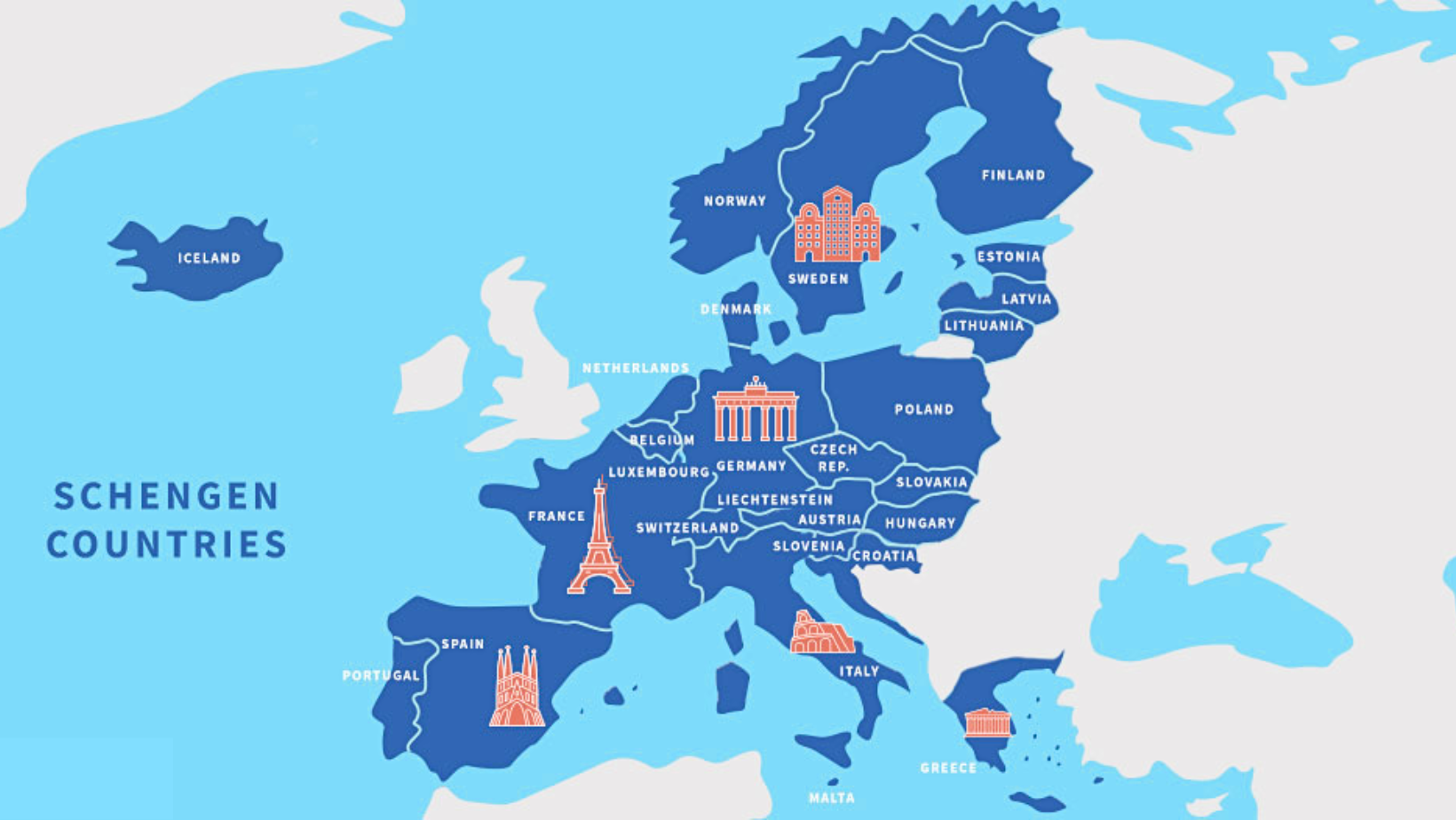The Schengen Area in Europe (The Hindu)

- 16 Feb 2024
Why is it in the News?
Kosovo recently achieved visa-free entry to the Schengen zone in Europe, the world's largest area of unrestricted movement. Now, citizens of Kosovo can visit the Schengen zone as tourists for up to 90 days within 180 days.
Why Kosovo's Schengen Application Was Delayed for Years?
- Despite the European Commission's clearance of Pristina's readiness to address issues like illegal migration and corruption in 2018, Kosovo faced prolonged delays in obtaining Schengen visa-free status.
- The primary obstacle stemmed from opposition from various EU members who did not acknowledge Kosovo's unilateral declaration of independence from Serbia in 2008.
- Moreover, Kosovo lacks legal statehood recognition from the UN and is not acknowledged by key global players like Russia and China.
What is the Schengen Zone?
- The Schengen Zone is an area that encompasses much of Europe and enables visa-free and border-free travel within it.
- The Schengen zone is named after the Schengen Agreement, which was signed in 1985 in Schengen, Luxembourg.
- The Schengen Zone acts as a single jurisdiction that allows travellers to cross borders without stopping for any border checks and therefore enables those who live close to international borders to come and go with ease.
- It currently includes 27 countries in Europe, though not all are members of the European Union.
- The exceptions are Norway, Liechtenstein, Switzerland, and Iceland.
- Croatia, an EU member since 2013, joined Schengen in 2023, while Romania and Bulgaria, EU members since 2007, will gain partial Schengen entry from 31 March 2024.
Is Admission to Schengen Mandatory for EU Members?
- When the Schengen agreement took effect in 1995, only seven of the entire 15-member union at the time joined the passport-free area.
- Today, 23 of the 27 EU states are part of the passport-free zone, excluding Cyprus, Romania, Bulgaria and Ireland.
- The Schengen area comprises 27 countries, including four non-EU members: Iceland, Liechtenstein, Switzerland and Norway.
- It is important not to confuse the status of the four countries with the recent entry of Kosovo and the other five western Balkan entrants which are not counted among the Schengen 27 members.
What are the Advantages of the EU’s Border-free Policy?
- For nationals of any country, the benefit is the freedom to travel with a single Schengen visa to other European nations within the borderless area.
- For EU states, the Visa-free borderless travel, alongside the single currency adopted by 20 EU countries, is the most visible symbol of European integration.
What are the Challenges Faced by the Schengen Region?
- The Schengen region faced significant challenges, particularly during the Eurozone sovereign debt crisis of the past decade.
- The influx of migrants from conflict areas in Africa and West Asia, coupled with the rise of anti-immigrant sentiments fueled by far-right populist parties in Europe, added strain to the region.
- At one point, there were discussions within the EU about potentially excluding Mediterranean border countries from the Schengen Area, as some individual states considered reintroducing border controls unilaterally.
